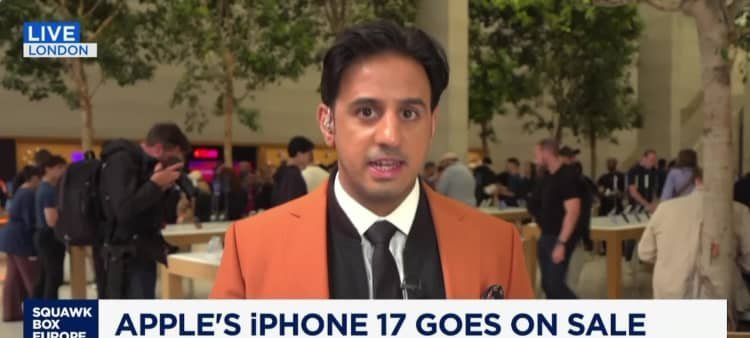Outside China, the new models also attracted interest in Singapore, where lines formed early at the Marina Bay outlet. Two professionals, Iman Isa and Daniel Muhamed Nuv, waited several hours to purchase iPhone 17 Pros, citing longer battery life and camera improvements as decisive factors. In London, queues outside the Regent Street store were visibly longer than last year, with many shoppers targeting the premium Pro and Pro Max editions.
Pricing strategy and early market reaction
Apple kept the starting price of the standard iPhone 17 unchanged from the iPhone 16 while doubling base storage, a move analysts say could stimulate upgrades. Le Xuan Chiew, research manager at Omdia, noted that the entry-level model has out-performed expectations in early orders, thanks to the stable price point combined with hardware bumps.
Consumer attention is not limited to phones. The third-generation AirPods Pro, featuring on-device live translation, sold out quickly in several regions. Shoppers in London and Singapore mentioned the new AirPods as a compelling complement to their iPhone purchases, underscoring Apple’s strategy of bundling hardware and software features across its ecosystem.
The strong launch arrives at a critical time for the company. Apple faces intensifying competition in China, the world’s largest smartphone market, and heightened investor scrutiny over its artificial-intelligence roadmap. According to a recent market analysis referenced by Statista, domestic Chinese brands collectively control more than 70 percent of local smartphone shipments, pressuring Apple to differentiate through premium hardware and integrated services.
AI expectations and investor sentiment
Market observers view the iPhone 17 cycle as a barometer for Apple’s ability to maintain momentum while it works to commercialize new AI features. Ben Wood, chief analyst at CCS Insight, said Apple “needs to deliver” on artificial intelligence after an underwhelming rollout late last year. A strong hardware refresh, Wood added, gives the company short-term breathing room but does not diminish expectations for substantial AI announcements at future software events.

Imagem: Internet
Apple has not detailed new AI capabilities tied to the iPhone 17, focusing instead on tangible upgrades such as the titanium-framed design on Pro models, an A19 Bionic chip with expanded neural cores, and enhanced thermal management. Investors will look for updates during next quarter’s earnings call, where early sales data and forward guidance could offer clues about whether the latest devices can offset softness in mature markets.
Competitive landscape in China
While launch-day crowds suggest healthy interest, sustained performance in China remains uncertain. Huawei’s recent Mate series has regained momentum after U.S. sanctions limited its 5G offerings for several cycles. Xiaomi and Oppo continue to release flagship-class phones at lower price points, often with region-specific features such as high-resolution periscope cameras and fast charging above 100 watts.
Apple’s strategy hinges on convincing consumers that its hardware longevity, privacy focus and tight hardware-software integration justify a premium. Industry researchers will monitor whether trade-in activity and carrier promotions can convert first-time buyers who previously preferred domestic brands.
Outlook
Early data from retailers and research firms suggest the iPhone 17 launch has met, and in some cases exceeded, initial expectations. Sustaining that momentum will depend on Apple’s ability to accelerate AI-driven experiences and defend share in fiercely competitive markets, particularly China. For now, the company has secured long opening-day lines—a visible but only preliminary measure of success.
For continuous coverage of technology and financial developments, readers can visit our dedicated Finance News Update section.
Image credit: Getty Images



